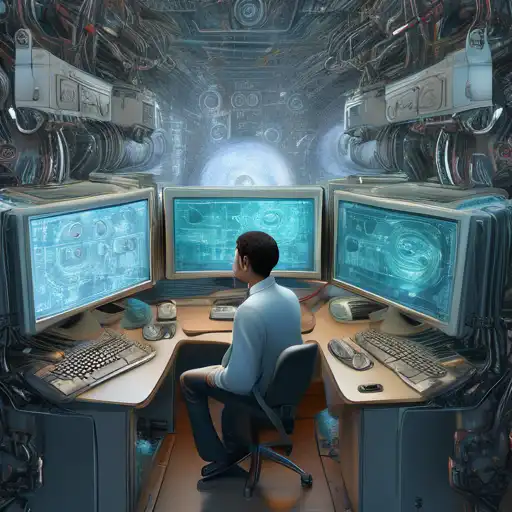Introduction to Computer Vision
Computer Vision is a fascinating field of artificial intelligence (AI) that enables machines to interpret and understand the visual world. By mimicking human vision, computers can identify and process objects in images and videos in the same way that humans do, but at a much faster rate and, in some cases, with greater accuracy.
How Computer Vision Works
At its core, computer vision involves the acquisition, processing, analysis, and understanding of digital images to extract meaningful information. This process typically involves several steps, including image acquisition, preprocessing, feature extraction, detection/segmentation, and recognition/interpretation.
Applications of Computer Vision
Computer vision has a wide range of applications across various industries. Some of the most notable include:
- Healthcare: From diagnosing diseases through medical imaging to assisting in surgeries, computer vision is revolutionizing healthcare.
- Automotive: Self-driving cars use computer vision to navigate roads, recognize traffic signs, and avoid obstacles.
- Retail: Automated checkout systems and inventory management are made possible through computer vision.
- Security: Facial recognition and surveillance systems enhance security measures in public and private spaces.
Challenges in Computer Vision
Despite its advancements, computer vision faces several challenges, such as varying lighting conditions, occlusions, and the need for large datasets for training models. Overcoming these challenges requires continuous research and development in the field.
The Future of Computer Vision
The future of computer vision is incredibly promising, with advancements in AI and machine learning driving its evolution. As technology progresses, we can expect more sophisticated applications that will further blur the lines between human and machine vision.
For those interested in diving deeper into the world of AI and machine learning, exploring machine learning and deep learning can provide valuable insights into how computer vision models are trained and optimized.
Conclusion
Computer vision is transforming the way machines interact with the visual world, offering endless possibilities across various sectors. As we continue to advance in this field, the potential for innovation and improvement in machine vision is limitless.
